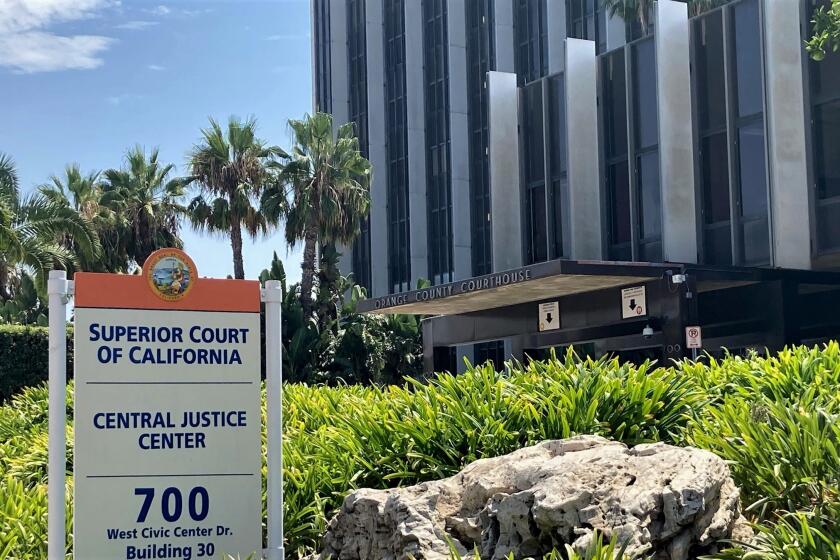Do plant communities commute?
- Share via
ELISABETH M. BROWN
The idea that plants grow in plant communities is well-established,
and it’s a convenient shorthand to defining a group of plants and
animals that live in the same area and interact with each other. This
insect pollinates that particular flower, this bird nests in that
kind of cactus, this animal spreads that plant’s seed by eating its
fruit. Here in Laguna, the hillsides and canyons are covered by the
coastal sage scrub community.
With the advent of the cool and rainy season, our hillsides are
greening up. The few light green cactus plants that were so easy to
see among the browns and grays of the dormant shrubs are fading into
the background. On a recent walk through Laguna Coast Wilderness
Park, we found that nearly all of the shrubs that lose their leaves
during the drought season were leafing out.
In a couple of months the blue-white Dudleyas, also called Chalk
Lettuce, will bloom spectacularly. These big succulents grow mainly
on dry hillsides and sandstone cliff faces, but they’re easy to
overlook except at flowering time. Then they are suddenly very
noticeable as they grow long, graceful stalks carrying red
bell-shaped flowers.
In the Laguna coast area, Dudleya are a minor part of the
community, but in drier Baja it’s a different story. Below the border
the coastal sage scrub has more cactus and fewer shrubs, and the
sandstone cliffs are loaded with succulents.
Coastal sage scrub is not the same everywhere; to the casual eye
it looks pretty much the same, but the mix of plants changes with its
location. Some shrubs, like California Sagebrush, California
Buckwheat, and Bush Sunflower, are widespread, but others are more
variable.
Going north into Ventura county and a wetter climate, cactus and
Dudleya become scarcer, while shrubs grow taller and closer together.
An attractive shrub with bright green holly-shaped leaves called
Coyote Brush becomes more common in the community. Locally, Coyote
Brush is restricted by our drier conditions to growing only in damp
places.
How can one plant community have different mixes of plants? As
Reid Moran, a well-known botanist from San Diego, stated loudly more
than once, “Communities don’t move, plants move.”
Plants grow wherever conditions are favorable, and plants living
in the same geographical area have similar, but not identical,
requirements. That’s why the Dudleyas grow on dry sandstone cliffs,
but the Coyote Brush is found in wetter areas.
At the end of the last Ice Age, there was a general reshuffling of
North American plant communities as the climate warmed and dried, and
melting ice sheets uncovered new land to the North. Plants from both
wet, cool north and warm, dry south areas moved into the coastal
area. They grew where they found conditions to their liking, and
altogether they created coastal sage scrub, in a somewhat different
mix up and down the coast.
Botanists have different names for each of these variants: Diegan
CSS in the south, Riversidian CSS inland, and Venturan CSS to the
north. And what is Orange County? Venturan-Diegan CSS; a sort of
coastal sage scrub crossroads.
* ELISABETH BROWN is a biologist and the president of Laguna
Greenbelt Inc.
All the latest on Orange County from Orange County.
Get our free TimesOC newsletter.
You may occasionally receive promotional content from the Daily Pilot.







